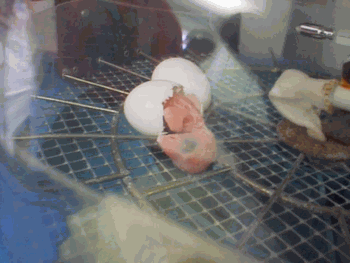www.DiamondAvian.com
www.TheBirdVet.com

Chronic egg laying is a very common problem in cockatiels, lovebirds, and budgies; and is seen in other species of pet birds including macaws, cockatoos, amazons, and African greys. This problem can begin in your bird as early as nine months or as late as several years of age. The most common age range is from one to three years.
The process of producing and laying an egg is an incredible feat of nature. A bird utilizes various proteins and minerals to build a container that can sustain a life for several days and up to several weeks. Within this container all of the necessary functions of life are carried out - eating, drinking, sleeping, waste disposal, breathing, growth and development, and so on. This is amazing to say the least!
The process of producing and laying an egg is stimulated by many factors. Day length, food availability, mate behavior, rainfall, competition for nesting sites, and many other factors can stimulate hens to lay an egg. It is not necessary that an egg be fertilized before it can be lain. In fact, a mate does not even need to be present for a female to lay eggs.
The shell of an egg is made primarily of calcium. The calcium comes from calcium stores within the bird's body. The bones and muscles provide nearly all of the calcium required to shell an egg. The calcium that is lost in forming the shell needs to be replaced so the body can continue to function properly. Calcium is primarily needed for muscle contractions and building strong bones. In the case of chronic egg laying, calcium stores are depleted and the body is unable to function properly. The condition is known as hypocalcemia. The most common problem in egg laying females associated with hypocalcemia is egg binding. With calcium at a low level the uterine muscles are unable to contract and push the egg out. Hypocalcemia can also cause seizure-like activity and brittle bones, which can be easily fractured.
During the laying cycle birds will begin holding their droppings for an extended period of time. This behavior is related to keeping the nest clean and free of poop. Often the bird will release large, loose, foul smelling, and discolored droppings. The odor is due to the presence of bacteria and yeast in the droppings. It is important to prevent excessive egg laying, since it can lead to many health problems. The most important factor in preventing health-related problems is nutrition. It is vital to be sure that your bird is on a complete and balanced diet. No diet is better or more complete than a formulated or pelleted diet. Pellets offer all essential nutrients in the correct ratios. Seeds are very inadequate in preventing problems related to excessive egg laying. Seeds have no calcium, almost no phosphorous, no vitamin A, and no vitamin D; all of which are essential in calcium absorption and utilization. Seeds are also deficient in essential amino acids (protein) and are unable to replace the protein lost in forming the inside of the egg (the yolk, albumin, and fetal membranes).
The first step in treating chronic egg laying is to put your bird on a complete diet. A bird that is on an balanced diet is in little danger of the health problems associated with chronic egg laying. The next step is to have your bird examined by an avian veterinarian for a complete work up, including exam, blood work, cultures, and all necessary treatments. Your veterinarian will be looking for bacterial and yeast infections related to holding in the poops, signs of poor nutrition and stress, and clinical signs of calcium deficiency. The next step is to decrease the amount of light your bird receives during the day. You want to provide them with a maximum of 10 hours of light per day. This will help prevent hormone release that leads to egg production.
Birds will lay one egg every other day with an average total number of up to 5 or 6 eggs. When your bird does lay an egg, you should leave it in the cage. If you remove it you will stimulate production of more eggs.
Finally, you should remove anything that may be stimulating breeding behavior. Dark, confining spaces such as shoeboxes, bags, cabinets and other places can serve as a nest. Disallow association with such places. Don't stroke your bird on the back, especially during her breeding period. Leave the grates on the bottom of the cage to give an unsuitable place to lay and sit on eggs. On rare occasions, females will chose a favorite toy or perch for masturbating. This item should be removed if your bird exhibits this behavior. Other changes may need to be made depending on your bird's environment and play habits.
A mate is not a solution for the chronic egg layer. Mates will only perpetuate the problem, not solve it. Your bird may become less concerned about you, bond to the other bird, want to reproduce, and you will lose the nice pet you have always had.
We, as responsible owners, should work to prevent excessive egg laying. Prevention can be accomplished by controlling these stimuli and providing balanced nutrition to our pet birds, which is critical in reducing the risk of secondary disease associated with chronic egg laying.